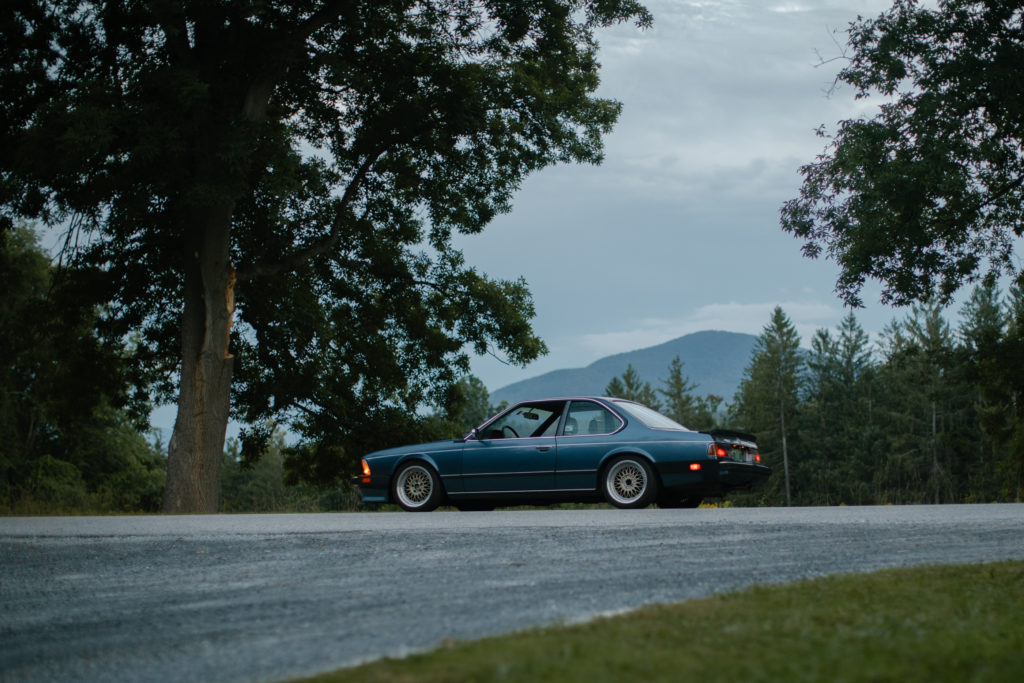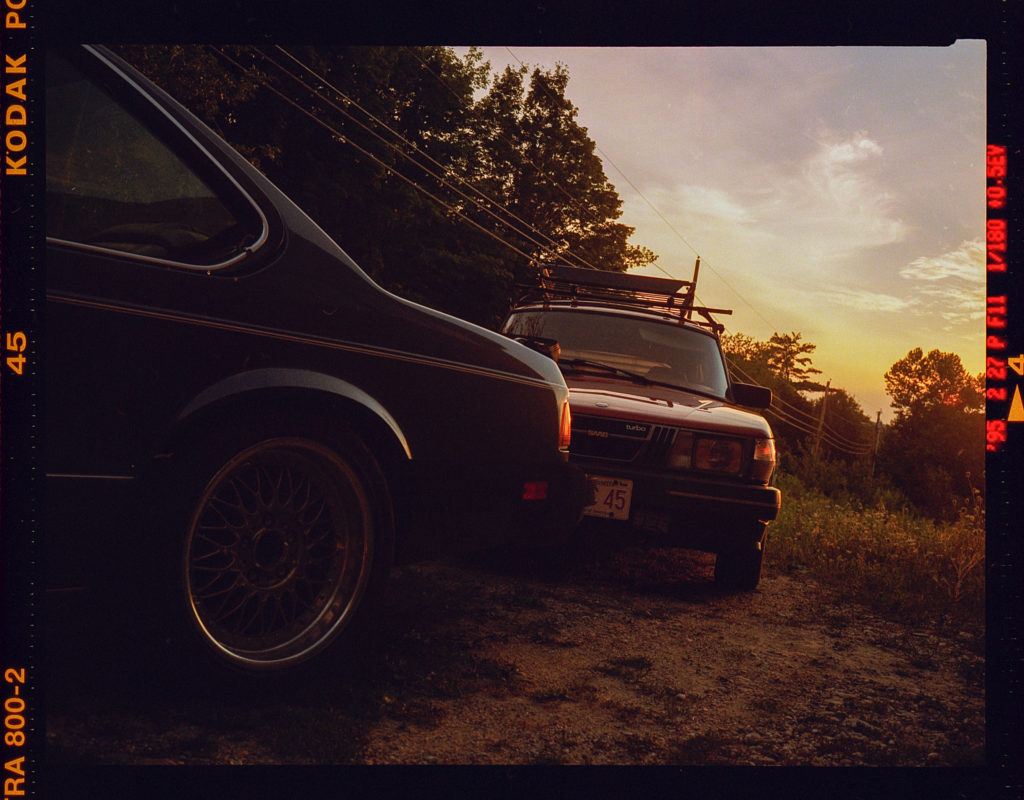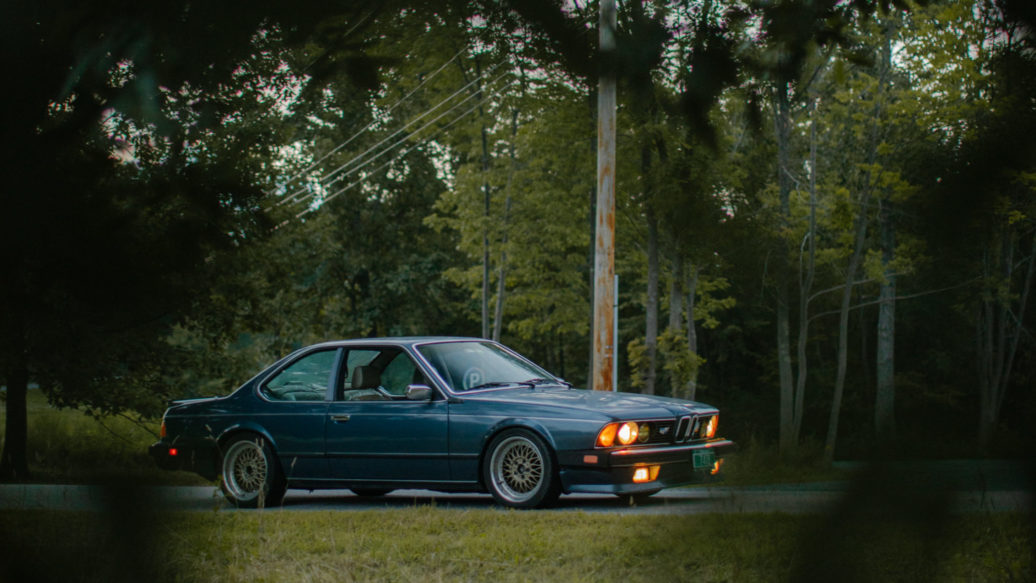Last week, I bought a house—or, as your uncle on Facebook might chime in, my bank bought a house, and I get to live in it from time to time. This particular residence is a tidy farmhouse in southern Vermont—and several feet away stands a three-bay, barn-style garage from the late 19th Century.
The barn, which has seen too many decades of nor’easters and too few cedar-shingle replacements, is certainly not the highlight of the property, but its hand-hewn structure is sturdy, and the slate roof still keeps the rain out. It’s a place where the snow isn’t, which is good enough to store at least part of my haphazard collection of German cars. However, the day I closed on the property was also the date of Vermont’s first snowfall of the winter, a stark harbinger that the driving season was behind us. It had been a season that my cars and I spent largely outdoors.
The storage arrangement wasn’t necessarily new; the downside of owning too many cars is that some of them inevitably live outside. But embracing the idea that cars and the elements can coexist was a fresh sensation.
I’ve had garages before—various kinds. The first (and best so far) was a two-car attached setup, where I spent many a Vermont winter night sitting in my E24 6 Series and my old roommate’s E93 335i, or watching the snow fall and running Griot’s Speed Shine over the fenders each week, waiting for spring.
My South Carolina garage was more modest, but it was a detached 1.5-car workshop, and after undoing the previous owner’s DIY spa ambitions, it carried out its humble job well.
Still, my passion for acquiring cars and an addiction to logistical adventures meant frequently pursuing à la carte storage solutions. These included quite a few storage units in quite a few states, leased workshops, and on one occasion, the basement of a car-storage facility built by the late owner of Hemmings Motor News.

But this past summer, with the weather clear and the South Carolina house sold, there wasn’t much choice without renting an entire warehouse to store the fleet that my girlfriend (an avid Saab enthusiast) and I had accumulated. So we selected a few of the more accessible vehicles—the ones that weren’t tucked in parents’ sheds or parked halfway across the country—and brought them to live outside our 800-square-foot rental.
There are certain times when a car becomes an island—that is, there are moments in vehicle usage when the machine must carry all the spare parts necessary to keep things running smoothly, and the driver must retain the knowledge to make it so. Anyone who’s departed eastward from Southern California in a vintage car knows the feeling: powering through the desert, acutely aware that, should any system fail, the nearest town’s mechanic won’t be a European specialist.
Bringing a fleet of vintage cars to a dirt driveway and a grass parking area inspired much the same feeling. Nothing could be dormant, or shoved aside; each car acquired a role, becoming an active participant in outdoor life. Thankfully, there’s a trick up a BMW CCA member’s sleeve in situations like this: BMWs are designed to be driven.

The BMW 7 Series became a common sight in southern Vermont this past summer.
Like many of you, I relish the opportunity to pamper my cars—to keep them inside, keep them fresh, and bemoan the ordeal of cleaning mesh wheels. But for the last few months, the lines between weekend cars and daily drivers blurred to obsolescence, and that wasn’t necessarily a bad thing. The result was simply that all of the older vehicles suddenly saw a lot more wheel time. My E24 6 Series found itself on early-morning bagel runs, and taking work calls over Bluetooth. The 7 Series, which I’ve written about before, saw every state in New England, climbing mountains and dirt roads day and night. It was even rented for a music video, set to be released later this winter. On the metaphorical island of self-performed repairs, the six and seven were robust.
Sure, there were issues. The seven has an auxiliary heater now, thanks to a leaky O-ring and a heater-core bypass, and at one point the 6 Series dumped an AutoZone’s worth of power-steering fluid on the ground (thanks to Chris and Mario Langsten at VSR for their timely repair on that one). But chilly or not, it’s worth the occasional driveway fix to sink into those mechanically-comfortable sport seats, and listen to the hum of an M30 engine in the fall. Even now, I know I could start them up right now and drive across the country.
The reality is that many vintage cars aren’t as fragile as they’re made out to be. When it came time to jump in a car and traverse the Northeast on a whim, the choice was almost always the 1979 7 Series—not the 2002 Saab Aero, 1987 Toyota 4Runner, or 1993 Mercedes W201 that I had on hand. Sometimes, on an early morning with a day full of meetings and work, my mind would wander and entirely forget that I was relying on a 40-year-old car to carry me several states away. The more you rely on a car, the more you trust it.

Two 1986 classics: the Saab 900 Turbo SPG and the BMW 635CSi.
But I can’t say that I’m not relieved to have garage space again. Quite a few cars could use an oil change, and I’ve been missing the waterless-detail routine of winter. But when I glance at the barn and know that the E24 and the E23 are safe and protected from the elements, it’ll be hard not to escape the idea that, if needed, they could battle snow and ice with the rest of the fleet. And if the summer’s taught me anything, it’s that they’d probably excel at it, too.—David Rose
[Photos by Syd Cummings.]





















